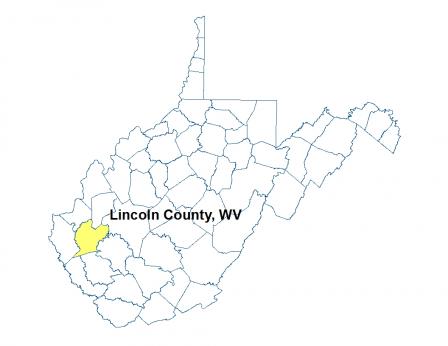Stories of Progress in Achieving Healthy Waters
U.S. EPA Region 3 Water Protection Division
Lincoln County, West Virginia • March 19, 2015
EPA-funded septic systems are making a difference in a distressed West Virginia community.
In the Left Fork of the Mud River watershed – one of the poorest and most rural areas of West Virginia – old, failing septic tanks were causing major problems. Raw sewage was being discharged into streams and creeks, contributing to high levels of E. coli bacteria. In one case, sewage regularly ponded under a family home, spreading 30 feet into the yard.
Magdalene Cunningham of the EPA Mid-Atlantic Region’s Water Protection Division recalls seeing a kids’ swing set in the middle of one of the impacted properties.
Now, after five phases of work over 10 years with nearly $4 million in EPA funding, the 117th home in this area of Lincoln County is about to get one of the innovative septic systems that have improved water quality, reduced public health threats and drawn the community together.
The majority of homes in the watershed are too close to creeks or don’t have enough room for conventional septic systems. Instead, the project involves installing high-tech systems that use peat as a secondary treatment and ultraviolet light as the final disinfectant.
Residents who were once skeptical about whether the government funds would ever reach their doorsteps began lining up to be next after seeing that their neighbors “didn’t have septic in their yards and the creek didn’t smell bad anymore,” said Ric MacDowell, director of the Lincoln County Green Wastewater Project.
In fact, MacDowell said one of the biggest benefits of the project has been the residents’ involvement. They’ve formed a non-profit wastewater management association and pay $8 a month to have a contractor inspect their systems twice a year. If problems are found, the homeowner pays only 30 percent of the repair cost; the association picks up the rest. MacDowell said sampling has shown improvements in tributaries of the Left Fork. Water samples with acceptable levels of under 200 E. coli colonies per 100 ml rose from 34% between 2005 and 2010 to 57% between 2011 and 2013.
The project has involved a partnership between the West Virginia Department of Environmental Protection, the state Department of Health and Human Resources, and the Lincoln County Commission. The EPA financing includes a $1 million grant (Phase 1) and then four rounds of Clean Water State Revolving Fund loans with 100 percent principal forgiveness totaling $2.86 million.

-
High Tech Systems Help Low-Income Families Deal with Sewage Problems (PDF)(1 pg, 698 K,
03/19/2015)
EPA-funded septic systems are making a difference in a distressed West Virginia community
